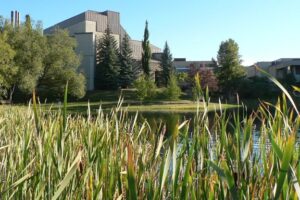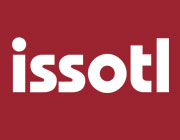
Adopting problem-based learning: Barriers, discomfort, and hope
Michael Wong1,2, Sarah Ali2
1 Department of Psychiatry and Behavioural Neurosciences, McMaster University, Canada
2 Honours Health Sciences (BHSc) Program, McMaster University, Canada
Email Correspondence:
wongm8@mcmaster.ca
Problem-based learning (PBL) is a student-centered pedagogy that facilitates learning through the process of working through an open-ended problem (Wood, 2003). Since its inception in the 1960s, PBL has gained much attention as an effective pedagogy, yet PBL remains relatively underutilized in STEM education (Stains et al., 2018). In this post, we reflect on our experiences as faculty and as student with PBL to explore possible barriers to the uptake of this pedagogy in STEM education. We hope our reflections provide insight to the broader teaching and learning community about these challenges and normalize the feelings for those who are interested in adopting PBL into their teaching practice.
Reflections of a faculty member (Michael Wong)
Despite McMaster being the birthplace of PBL, my journey with PBL has not been easy. When I began my teaching career, I thought good teaching meant delivering a good lecture, a misconception I developed because the classes I attended as a student emphasized teaching as a didactic activity. Over the years, I’ve come to realize that education has a type of generational effect, where many educators, like I, modeled our teaching practices after how we were taught. This generational effect creates a system of expectations about what teaching and learning mean. Early in my career, I thought I was an effective educator because I received positive student evaluations and nominations for teaching awards. I later learned that what I was good at wasn’t teaching per se, but lecturing. As I continued my journey, I came to realize the value of student-centered spaces. I explored pedagogies such as inquiry and PBL, all of which forced me to do much unlearning and to challenge the traditional expectations of what it means to teach and learn. This process for me was and is still difficult, as career progression is often determined based on traditional metrics of “good” teaching. Despite these challenges, I persisted. I persisted because the evidence in support of PBL and student-centered pedagogies is overwhelmingly positive, and I have seen first-hand how these pedagogies facilitated students to become independent thinkers and, most importantly, foster a classroom of belonging. Despite my initial fear of losing the reinforcers that told me I was a “good” teacher, I learned to trust the process. And through this trust, I have co-created classes with students that transcend the best lectures I have ever delivered.
Reflections of a student (Sarah Ali)
The first time I learned about PBL was during my first week as an undergraduate student at McMaster University. I was reading the course outlines for my classes and saw that some of them weren’t going to be didactic-styled. Instead, they were going to be PBL. Up until that point, didactic learning was the only form of learning I knew. I learned in high school through listening to my teachers “teach,” taking notes, and then memorizing them for upcoming exams. Whatever the teacher said, that’s what I needed to know. PBL was the complete opposite, and it was very daunting at first. I even preferred my didactic courses because they served as the prototype for learning in all my previous experiences with education. PBL was pushing me to become both the student and the teacher. It was my responsibility to dissect the problem, learn the relevant topics, and then teach my learnings to my classmates. I didn’t think I was smart enough for PBL. A part of me still feels like I’m not good at PBL despite taking countless PBL courses. I guess that’s one of the most rewarding elements of PBL. You’re always learning. You’re always adapting yourself to the problem. You’re always improving from your mistakes. You’re always discussing with your peers and instructors, hoping to build on each other’s ideas. PBL is a muscle that constantly needs exercise. As you work on it, you become an active learner and fulfil the true goal of being in an educational space—to develop skills and gain knowledge that you can use for the rest of your life.
Conclusion
We recognized the largest barrier we both faced was discomfort with the unknown, a discomfort that was created because we had both succumbed to the generational effect of education. This discomfort is not unique to us, as other faculty and students have also struggled with pedagogies that deviate from the traditional “teaching by telling” approach (Alessio, 2004; Keiler, 2018; Lee and Branch, 2022). Overcoming this discomfort can be especially challenging if resources and a community of support are lacking. Therefore, individuals interested in starting their PBL journey may find the article by Wood (2003) helpful, as it provides an excellent overview and step-by-step framework of this pedagogy. We also invite anyone interested in PBL to join the ISSOTL PBL interest group as a place to learn, share, collaborate and, most importantly, for support.
References
Alessio, Helaine. (2004). Student perceptions about and performance in problem-based learning.
Journal of Scholarship of Teaching and Learning, 4(1), 23-34.
Keiler, Leslie S. (2018). Teachers’ roles and identities in student-centered classrooms. International journal of STEM education, 5, 1-20.
Lee, Sang Joon, & Branch, Robert Maribe. (2022). Students’ reactions to a student-centered learning environment in relation to their beliefs about teaching and learning. International Journal of Teaching and Learning in Higher Education, 33(3), 298-305.
Stains, Marilyne, Harshman, Jordan, Barker, Megan K., Chasteen, Stephanie V., Cole, Renee, DeChenne-Peters, Sue Ellen, … & Young, Anna M. (2018). Anatomy of STEM teaching in North American universities. Science, 359(6383), 1468-1470.
Wood, Diana F. (2003). ABC of Learning and Teaching In Medicine: Problem based learning. BMJ, 326(7384), 328-330.




